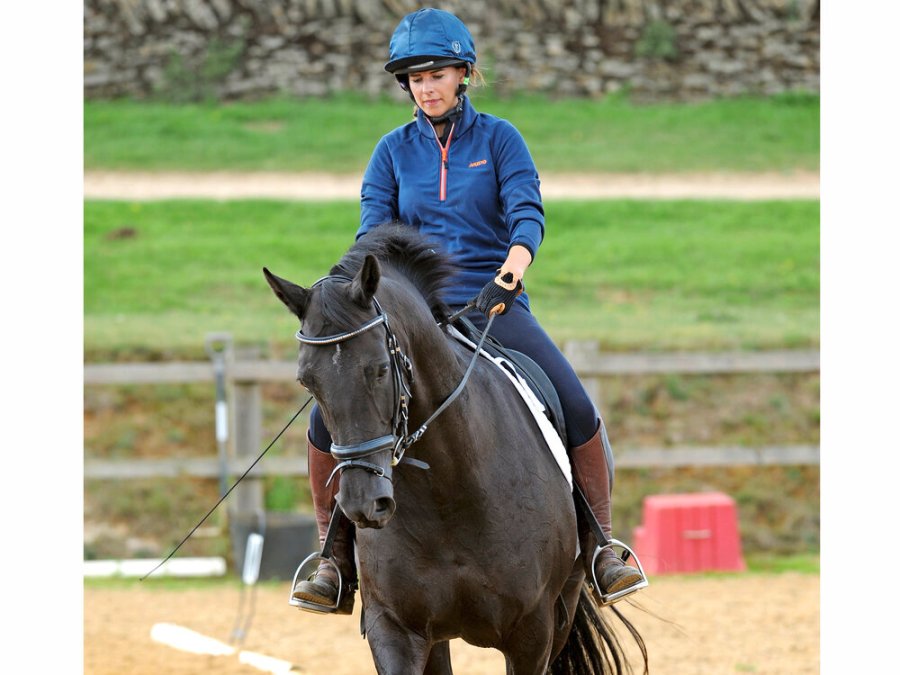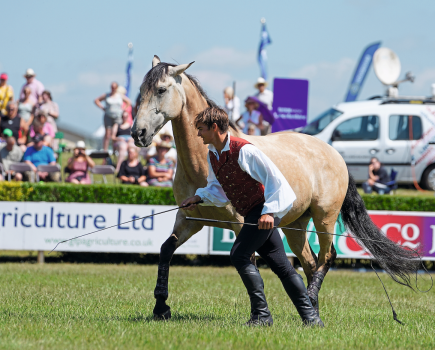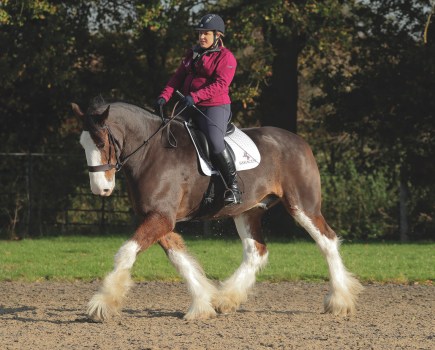BHS Senior coach Steph Robson explains some simple position fixes to make you a better rider.
Just like horses, every rider has different conformation — long or short legs, for example, or a long back — and each person sits slightly differently in the saddle with their own style.
The most important thing is that the position of the rider is balanced so that they can apply the aids clearly and consistently.
When you’re on board, think of sitting ‘around’ your horse, as opposed to ‘on’ him — mould your seat and legs around his barrel rather than having your weight in one particular place.
It’s usually the balance from the rider’s seat that allows the leg position to be effective and still.
As far as possible, there should be a straight line from your ear to your hip to your heel, with the heel being slightly lower than the toe. This allows the leg to be in the correct position to apply effective aids.
Hands high or low?
Professional riders tend to ride with their hands a little higher as their horses are generally working at a more advanced level.
In other words, they are more ‘uphill’, with a higher degree of collection. This is to allow the horse’s shoulder to come up as the horse collects behind.
Each horse and rider combination is different, though, and I would always take into consideration the type and temperament of the horse and the level and ability of the rider.
Elastic band hands
In general, focus on the actual connection and contact down the rein to the mouth. It may be the pressure and direction of the rein that your horse doesn’t like, rather than the height of your hand.
Ride with a hand that feels comfortable for you, but check that it’s not too low — this can create what we call a ‘backward’ hand, which can restrict your horse from seeking the contact, going forwards and establishing true throughness.
Make sure you are soft in the shoulder and elbow, and that the contact is consistent with an even pressure to allow your horse to be confident in the rein.
Think of the contact being like an elastic band that moves smoothly with the movement of your horse.
Ditch the ‘scrub’
‘Scrubbing’ with your heels to encourage your horse forwards is often a sign that your horse is not in front of the leg, meaning that when you apply your leg he doesn’t respond in the way you want him to.
In these cases the rider then starts to nag with the leg, causing the horse to ignore it and creating a vicious circle.
First, check that your stirrup length isn’t too long or too short and that your leg position is correct — no gripping with the heel or holding with the knee.
Be aware of using more of your calf muscle than your heel. Apply your leg aid and, if your horse doesn’t respond, on your second aid reinforce it with your schooling whip.
Your horse’s response to your aids should be prompt; you shouldn’t have to nag or ‘scrub’ at him.
Tempo and transitions
Practise lots and lots of transitions and change the tempo within the paces, always being mindful not to nag with your leg. Rider exercises on the ground to gain more strength in your general position will help too.
Don’t miss the latest issue of Your Horse Magazine, jam-packed with training and veterinary advice, horse-care tips and the latest equestrian products, available now.










